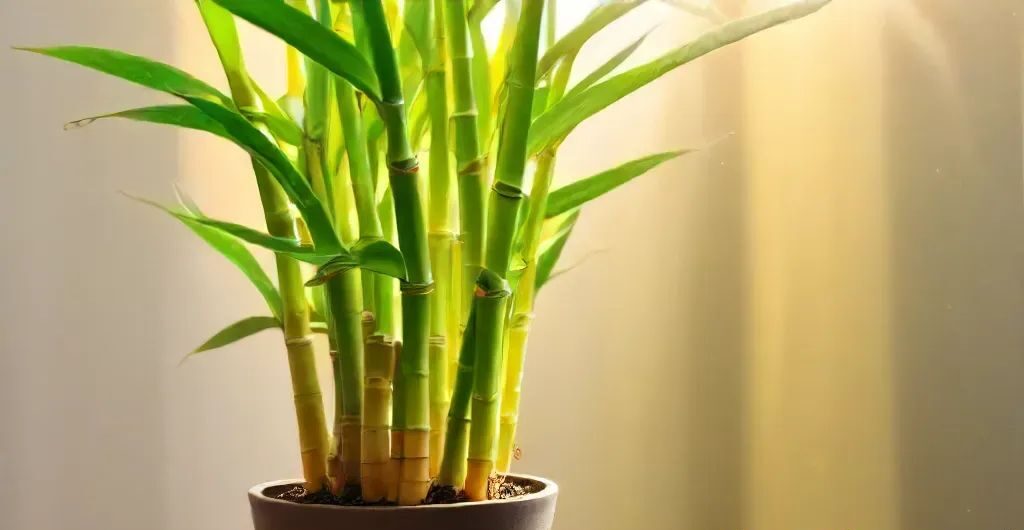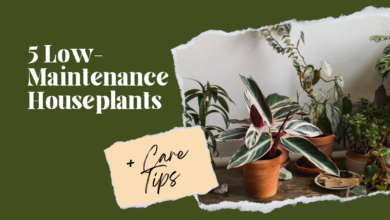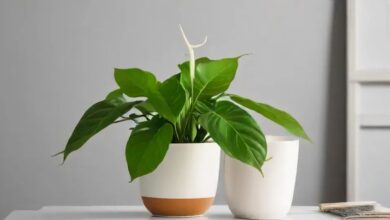Understanding Why Lucky Bamboo Turns Yellow and How to Revive It
A Guide to Nurturing Healthy Lucky Bamboo and Creative Home Decor Inspirations

An attractive houseplant with deep symbolic meaning in feng shui, lucky bamboo is a favorite among many. Its basic appearance and slender green stalks make it a popular choice for bringing a little bit of the outdoors inside. Nevertheless, lucky bamboo occasionally has a typical issue: leaf yellowing, despite its reputation for low maintenance. Knowing what causes lucky bamboo to turn yellow and how to revive it is essential for maintaining its attractive and healthy appearance.
Why does Lucky Bamboo turn yellow?

Several factors can contribute to the yellowing of lucky bamboo leaves, including:
Overwatering
Underwatering Lucky bamboo can cause it to wilt. Constant submersion can cause root rot and suffocation of the roots. This makes it hard for the plant to take in nutrients, which could lead to leaf yellowing.
Underwatering
Underwatering, on the other hand, can also lead to leaf yellowing. Lucky bamboo needs a lot of water to grow; if it doesn’t get enough, the leaves will become brown and then yellow.
Poor water quality:
The water quality has a significant impact on the growth of lucky bamboo. Tap water that has been chlorinated or fluoridated can be harmful to plants. To avoid chemical residues, use distilled water or let tap water remain overnight before watering plants.
Direct Sunlight:
Although fortunate bamboo thrives in partial shade, the leaves might get brown or yellow from overexposure to direct sunlight.
Nutrient Deficiency:
To flourish, lucky bamboo needs very little in the way of nutrients. Yellowing leaves are an indication of nutritional inadequacy and can occur if the plant is not given enough water or fertilizer.
How to Revive Yellowing Lucky Bamboo

The sudden yellowing of the leaves on your lucky bamboo is nothing to be alarmed about. In many cases, with the right attention, you can bring the plant back to life and get it looking as good as new. What follows is a list of possible actions:
Assess Watering Practices:
Keep an eye on the soil’s moisture level. Be careful not to let the plant sit in water or let it dry out entirely in between waterings. soil should be continually moist without being waterlogged, so adjust watering schedule accordingly.
Improve Water Quality:
To protect plants from potentially dangerous pollutants, use water that has been filtered, distilled, or dechlorinated. Make sure to let the tap water sit for at least 24 hours before watering your lucky bamboo, if you’re using it.
Adjust Lighting:
Put your fortunate bamboo plant somewhere that gets enough indirect light. Keep it out of the sun as much as possible, particularly when the temperature outside reaches its peak. To avoid more damage to the leaves, you may need to relocate them.
Trim yellow leaves:
Using clean, sharp scissors, remove any leaves that are yellow or brown. Not only does this make the plant seem better, but it also promotes more growth.
Provide Nutrients:
You could want to give your lucky bamboo a little fertilizer if it seems to be lacking in nutrients. Apply a half-strength solution of a balanced, water-soluble fertilizer once a month throughout the spring and summer growing seasons.
Monitor temperature and humidity:
Temperatures of 65 to 90 degrees Fahrenheit (18 to 32 degrees Celsius) and moderate humidity are ideal for lucky bamboo. If you don’t want to see your plant’s leaves turn yellow from stress, keep it out of drafts and away from dramatic temperature changes.
Reviving yellowing lucky bamboo and promoting its general health and vigor is often possible by attending to these concerns and giving it the right care. If you want your plant to flourish, you need to keep an eye on it and give it what it needs.
Common Pests and Diseases
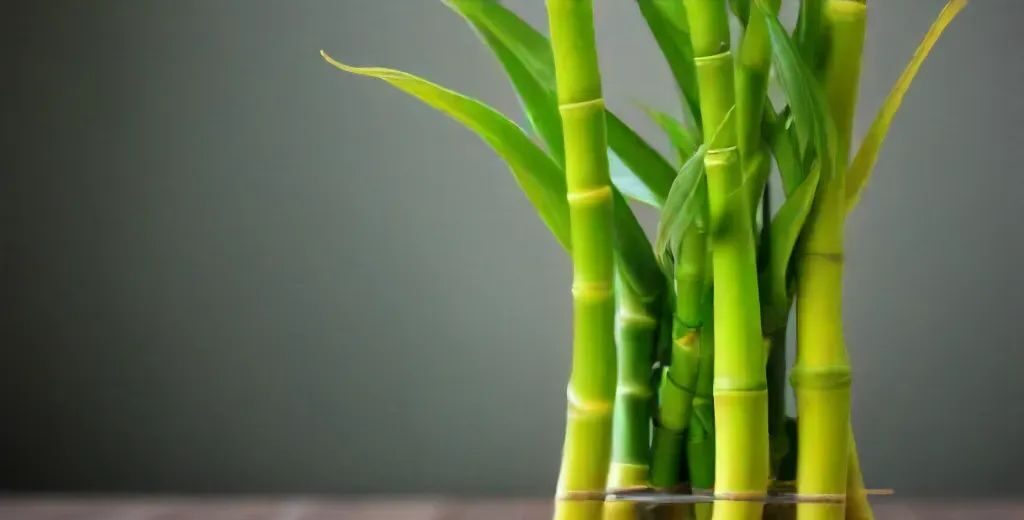
Despite lucky bamboo’s natural resistance to pests and diseases, it can nevertheless face problems like:
Spider Mites:
Upon infestation, these microscopic parasites can cause leaf stippling, webbing, and yellowing in fortunate bamboo. Scrubbing the afflicted leaves with mild water and maybe some neem oil or insecticidal soap will help keep spider mites at bay. Upon infestation, these microscopic parasites can cause leaf stippling, webbing, and yellowing in fortunate bamboo. Scrubbing the afflicted leaves with mild water and maybe some neem oil or insecticidal soap will help keep spider mites at bay.
Mealybugs:
The fortunate bamboo can also be damaged by mealybugs, another prevalent insect. On the stems and leaves, they seem like cottony white masses. Use insecticidal soap or a cotton swab dampened with rubbing alcohol to manually remove them.
Root Rot:
Overwatering the roots on a regular basis causes them to decompose due to fungal diseases and deterioration. Avoid letting the plant sit in water, and make sure it drains properly to keep root rot at bay. Overwatering the roots on a regular basis causes them to decompose due to fungal diseases and deterioration. Avoid letting the plant sit in water, and make sure it drains properly to keep root rot at bay.
Yellowing leaves aren’t the only sign of trouble for fortunate bamboo; other signs include:
Brown Tips:
There are a number of potential causes for brown tips on lucky bamboo leaves, including exposure to dry air, water containing fluoride, or an accumulation of fertilizer. After you’ve trimmed the problematic tips, make any necessary adjustments to the watering and environmental conditions.
Leaf Curling:
Overfertilization, low humidity, or underwatering can cause leaves to curl. You can spritz the plant or use a humidity tray to give it enough humidity, and you can adjust the way you water it.
Stunted Growth:
Stunted growth in your lucky bamboo could be an indication of nutritional deficiency or root binding. A balanced fertilizer and repotting into new soil could be just what the plant needs to have it growing strong and healthy again.
Creative Home Decor Ideas
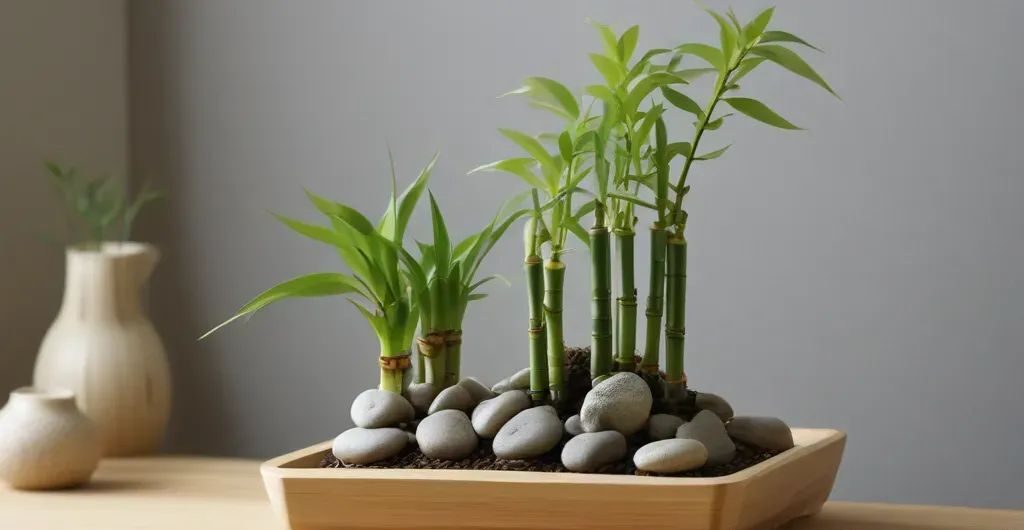
Stunted growth in your lucky bamboo could be an indication of nutritional deficiency or root binding. A balanced fertilizer and repotting into new soil could be just what the plant needs to have it growing strong and healthy again.
Zen Garden:
Use lucky bamboo, stones, and a small dish of water to make a miniature Zen garden. To create an atmosphere of peace, arrange the stones and bamboo stalks in a beautiful pattern.
Terrarium:
Put together a lovely terrarium with some lucky bamboo, moss, and some other tiny plants. To build an independent environment that needs little care, use a glass container with a cover.
Centerpiece:
Display a fortunate bamboo plant as a show-stopping focal point on your dining table or fireplace mantle. Put the stalks in a tall vase and fill it with marbles or ornamental stones for a classy yet understated arrangement.
Wall Art:
Put your lucky bamboo in a vertical garden or planter and watch it bring a little greenery into any space. Add visual appeal by arranging the stalks in a geometric style or in a cascade arrangement.
Q/A
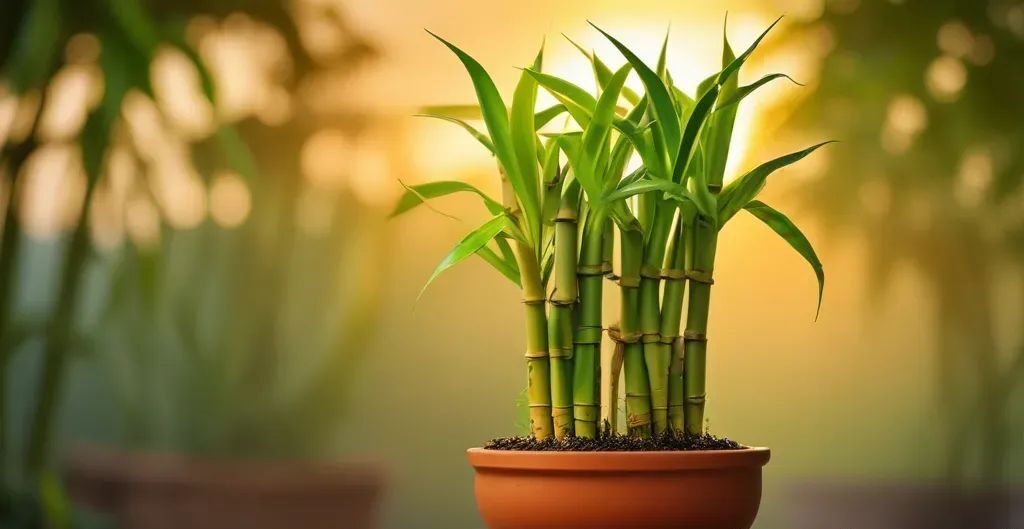
Can yellow bamboo turn green again?
Once a section of bamboo has turned yellow, it can never turn green again because the harm is too great. To make a plant look green again if its leaves have turned yellow, cut off little pieces. It is acceptable to leave the culms in situ if they have turned yellow but remain firm.
How do you increase lucky bamboo growth?
- Make sure the pot is clean. Algae can grow in stagnant water; therefore, it’s important to clean the container monthly and add water weekly.
2. Make sure it gets lots of light.
3. Purify your water.
4. Select an appropriate container.
5. Have good drainage.
How often should I water Lucky Bamboo?
Water for lucky bamboo should not contain chemicals like fluoride or chlorine; thus, it’s best to use filtered water, rainwater, or bottled water. To maintain a healthy plant, water it twice or three times a week. To ensure the plant stays in ideal condition, it is recommended to replace the water every 8 to 10 days.
Is lucky bamboo dead when it turns yellow?
The yellowing of older leaves, especially those at the base of the plant, is a normal occurrence if new growth appears on your plant. In order to make room for new development, your plant drops its old leaves. To encourage your plant to put its energy into healthy new development, just remove any diseased or old leaves.


